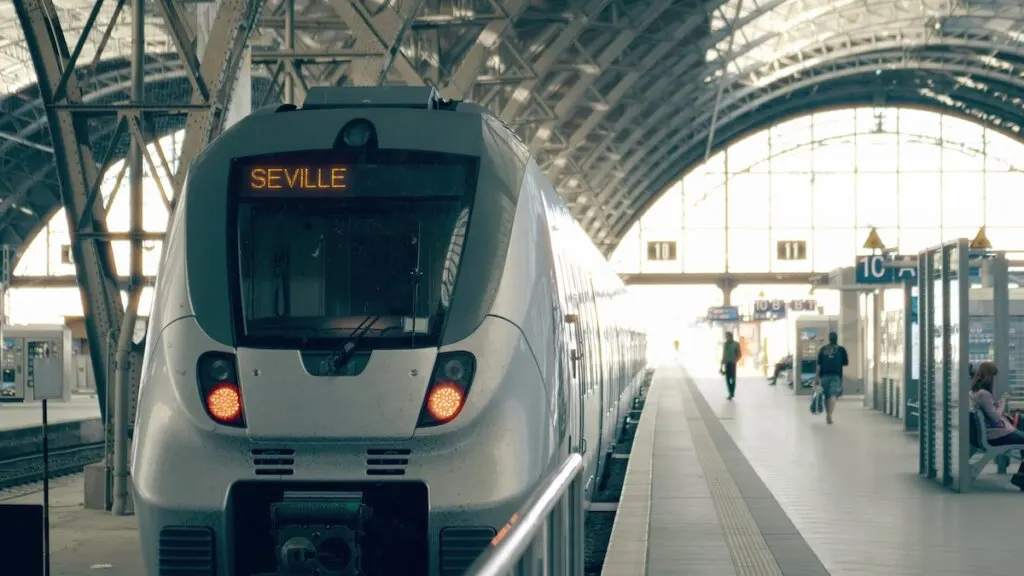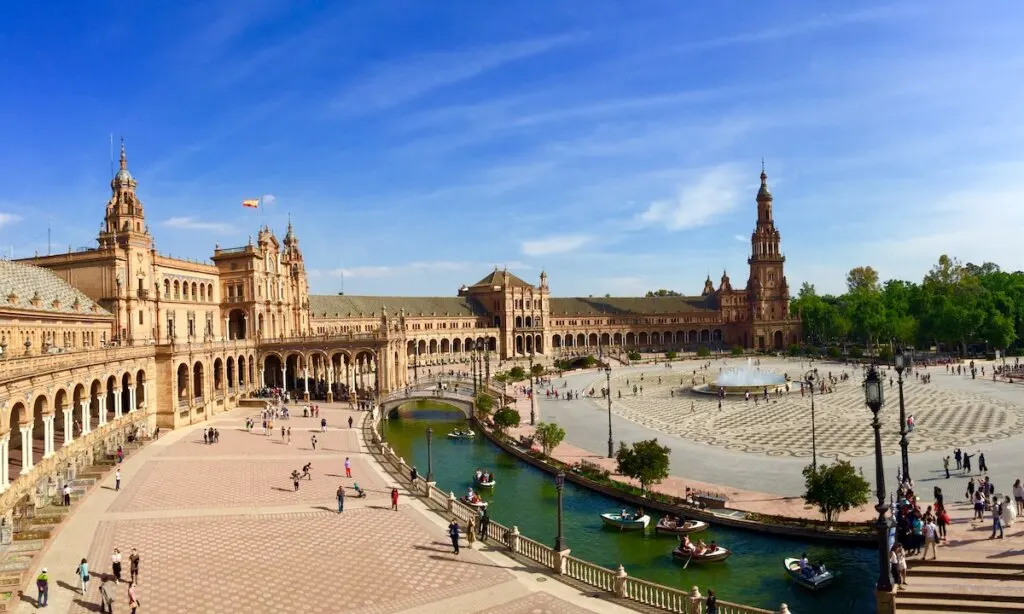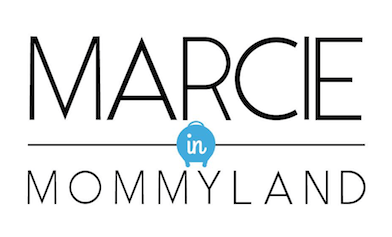Planning a trip to Seville and want to know what to add to your Spain itinerary? Keep scrolling to check out the best tourist attractions in Seville worth doing!
This list of tourist attractions in Seville Spain was co-written by family travel expert Marcie Cheung and contains affiliate links which means if you purchase something from one of my affiliate links, I may earn a small commission that goes back into maintaining this blog.
Guest post by Chris from aroundtheworldwithme.com
Are you headed to southern Spain and looking to learn about Seville’s best attractions? Then you’ve come to the right place, as we will go over all the amazing Seville tourist attractions in this article.
Tucked away in the south of Spain, Seville is a lovely city full of beautiful streets and plazas.
Oranges grow from orange trees along the road and flamenco dancers entertain tourists in the squares. Exquisite palaces flank the medieval streets, and the food is to die for.
I’m sure you’ll love this unique Spanish city!
Seville – What You Need to Know
Where is Seville?
Seville is in southwest Spain, not too far from the Portuguese border and just north of Gibraltar.
It’s not a huge city, with a population of around 700,000 (metro area 1.5 million), and the central region is actually quite compact and easy to walk around.
It’s the capital of the province of Andalusia, which also includes Cordoba, Malaga, and Granada.
How to Get to Seville
It’s very easy to get to Seville by plane, train, or car. The airport, however, is not large so if you’re coming from outside of Europe, you will not get a direct flight.

From the airport, there is a bus that will take you into the city or it’s only about a 10-15 minute drive should you wish to hop in a taxi.
If a stopover isn’t your thing, the closest major international airport is Lisbon, about 4-5 hours away by car. However, a better and quicker option is to fly to Madrid and take the train from there.
The Renfe zooms you across southern Spain to Seville is less than three hours from central Madrid. If you’re driving into the city, be sure to check out my guide to driving in Europe first.
How to Get Around Seville
Seville is a very walkable city, and every street is gorgeous.
You shouldn’t have to take a taxi or any public transport on your visit to Seville once you’ve arrived in the city center. It’s tiny compared to Madrid and Barcelona and if you are okay with walking, it’s the ideal city.
If you’re tired, there are plenty of taxis available. Uber does operate in Seville but is not as common as taxis so wait times can be significant.
Weather and When to Visit Seville
Summers in Seville can be downright brutal. Summer highs are often over 100 degrees (38 C) and air conditioning is not always guaranteed. Ensure where you stay has air conditioning no matter when you go.

Spring and fall are warm but nice and winter can be warm enough for T-shirts and shorts. It’s a semi-arid climate so mostly dry and sunny.
In terms of the best time of year to visit, the summer is just too hot. Seville is a spring or fall trip. I went in late April and the weather was perfect.
It’s also somewhere you can easily visit in the winter and still have clear skies and not be cold. Just remember the days are far shorter in the winter and it will get chilly after the sun sets.
Language
You might have heard before that a lot of Spanish folks don’t really speak any English. And that’s certainly true in Seville. It’s likely that your server at the restaurant won’t speak any English, but they’ll have English menus.
It’s a very touristy city so speaking Spanish is not necessary. People at hotels, guest houses and the main tourist attractions will speak English.
Food in Seville
The food in Seville was sublime. See the section below about eating in Seville.
Money
The currency in Spain is the Euro and it’s vital to carry around cash. Spain is cheaper than Northern Europe. But in the tourist-heavy central city prices will be inflated.
Where to Stay in Seville
Be sure to stay in the city center, within the old city walls. That way you’ll be able to walk everywhere. Accommodation is affordable and it’s worth it to stay where the action is.
There is a wide range of hotels, hostels, and Airbnbs to choose from when visiting Seville. A few of my top picks include Basic Hotel Sevilla Catedral, Puerta Catedral Apartments, and the Inglaterra Hotel.
How Long to Stay in Seville
The ideal stay in Seville is 2-3 nights, more if you want to taste more of the local food and see more flamenco performances. Two days will provide you with ample time to hit all the sights and enjoy some sangria on a nice terrace.
Flamenco
The flamenco comes from Seville. If you’re not familiar with this unique dance style you should definitely attend a flamenco performance.

There are many throughout the city and I can’t say that any are necessarily better than others. I went to Casa Del Flamenco and enjoyed it. There are many others though to check out.
The Top Tourist Attractions in Seville
Seville is loaded with beautiful sights and sounds. Just walking the city and taking it all in is enough to keep anyone entertained.
But here are a few of the top tourist attractions in Seville that you need to check out in order to have the best experience.
Plaza de España
The Plaza de España is arguably the most popular spot in the city. Though outside the ancient city walls and built relatively recently in European terms, it’s an architectural masterpiece.

It’s essentially a large semicircular plaza flanked by a massive semicircular building that contains various government offices. A small canal runs around the plaza and there are some gorgeous footbridges over the canal.
The plaza is a popular tourist destination, and you can also find flamenco dancers and street performers.
The plaza is surrounded by beautiful park areas on nearly all sides. You’ll find the parks full of orange trees, should you want some fresh fruit. Andalusia is one of Europe’s top orange-producing regions, along with Sicily and the Peloponnese Peninsula in Greece.
Catedral de Seville
The gothic cathedral in Seville is the largest of its kind in the world and the fourth-largest church in the world. There’s no denying it is simply massive.

Completed in the early 1500s, it symbolized the wealth and prosperity of Seville at the time. Today it’s a well-known landmark and one of the most recognized cathedrals in the world.
Entry to the church – which includes the tower – costs 10 Euros. The church recommends booking online in advance. Operating hours are ever-changing so check the website for the latest details.
Setas de Seville
No one can describe exactly what the Setas de Seville is. It’s like a giant architectural wooden sculpture that’s also an observation deck that you can walk around. It’s modern – from this century – and stuck right in the middle of the city.

There are walkways that take you along the top of the structure, which loosely resembles a forest of trees. From up there you can get some nice views of the city. The structure itself is the attraction though.
Maybe I’m biased since the company I worked for in Europe designed it, but it’s pretty impressive! Check the latest rates and availability.
Real Alcazar de Seville
This is one of the most iconic palaces in Spain. Located within Jardines de Morillo (a beautiful large park), the Real Alcazar de Seville was constructed over a period of about 500 years.
These days it’s been restored and is well kept. Book tickets online in advance as it gets quite popular.
Casa de Pilatos
Another beautiful palace in the city. Book in advance online. Casa de Pilatos is a very common spot to stop on a tour around Seville.
Torre del Oro
An ancient defensive tower at the edge of the city wall, Torre del Oro is small but popular. Check the website for the latest information.
As of 2023 the museum at Torre del Oro is open daily and costs only 3 euros for entrance (free on Mondays).
Museo de Baile Flamenco
If you want to learn the full history of flamenco dance, Museo de Baile Flamenco is the place to be. Flamenco is hugely popular in Seville and Spain.
After checking out the museum, be sure to hit a flamenco show. They last about an hour and a half and will thrill you with rhythmic dancing and classical guitar.
Plaza de Toros de la Real Maestranza de Caballeria de Seville
No cultural tour of Spain is complete without at least recognizing the history of bullfighting in the country. We can debate all day whether or not the practice should still remain well into the 20th century, but that’s for another day.
At Seville’s bullfighting ring you can tour the stadium – which dates back to the 1700s – and learn all about bullfighting in Seville in the museum. Entrance is 10 EUR.
Mercado de Triana
If you’re looking for some local foods or goods, stop by the Mercado de Triana.

It’s a large indoor market that sells just about every type of Spanish food you can think of. You’ll see the standard cured pig legs hanging from the jamon shop, as well as tons of sweets and fresh produce.
Other Stops to Make
There are literally endless other things you can see in Seville. Here are a few of the other stops you might want to make.
- Seville Museum of Fine Arts
- Palacio de las Duenas
- Archivo de Indias
- Hospital los Venerables
- Alameda de Hercules
- Universidad de Seville
Eat and Drink Seville
Food is like religion in Seville. Tapas are said to originate from Seville and the city is loaded with tapas bars and fantastic restaurants.
Regional cuisine in the Andalusian province is unique so be sure to try some and not be tempted to just order paella because you’re in Spain. If you’re in Barcelona, sure, get some paella.
But here in Seville, have your taste buds experience the rich flavors of southern Spain.
I’m not a huge fan of tapas – I always feel that by the time I get enough food to feel satisfied I’ve spent half my paycheck – but I loved the food in Seville.

I probably had the best octopus tentacle I’ve ever had at a small cafe in central Seville (close call with the octopus I had in Barcelona). So don’t skimp on the food bill in Seville. Live it up!
What to eat in Seville
Some of the local dishes you might want to try:
- Pork cheek: usually slow-cooked in a tomato-based sauce
- Bull’s tail: exactly what it sounds like, slow-cooked to perfection
- Solomillo al whiskey: fried pork loin in whiskey sauce
- Jamon de Iberia: the famous Spanish cured pig leg (eat plain or in a sandwich or both)
- Flamenquines: Spanish croquettes filled with jamon and goat cheese
- Espinacas con Garbanzos: one of the few choices, if you’re vegetarian, is this spinach and chickpea curry-like dish
- Gazpacho: this well-known cold tomato soup comes from Seville
- Churros: these can be found the world over these days, but they originated in Seville. Have them for breakfast.
You can also find great grilled octopus in Seville (and pretty much anywhere near the coast of Spain for that matter). For a more detailed list, you can check out this post about eating in Seville.
Dinner Time
If you’ve never been to Spain before you might be a little thrown off by how late the Spanish eat dinner. Typical dinner time is around 9:00 p.m., and most restaurants won’t even open till 8:00 p.m.
Closer to the city center there will be restaurants that are open all day to cater to tourists though. And tapas bars are typically open throughout the day and evening.
If you really want to be one with the locals, make your dinner reservations for 9:00 p.m. Note that most restaurants don’t offer their menu on their website so seeing the menu in person is really the only way.
Tapas Bar vs. Restaurant
They might seem synonymous, but there is a clear distinction between tapas bars and restaurants in Seville. Tapas bars usually don’t have set meal times and feature only tapas on the menu.
While restaurants will also usually have an assortment of tapas options, they’ll also offer larger, proper meals. It can be hard to tell the difference from the outside. The tapas bar will usually say “tapas bar” though. Either way, you’re bound to get some great food.
Vegetarians and Vegans
Traditional Spanish food is not too kind to vegetarians and vegans. You won’t be able to try most of the local delicacies.
But Seville is a modern city and there are plenty of restaurants in Seville that cater to vegetarians and vegans these days.
So it’s not like you’ll starve or anything. Just be aware that if you go to a traditional restaurant, you might have slim pickings on the menu.
What to Drink
It’s not agreed upon exactly where in Spain sangria originated from, but it’s possible it came from the Seville region. The fruity mixture of watered-down red wine and fruit juice is a staple in Spain.
In fact, according to EU law the drink can only be called sangria if made in Spain or Portugal. So be sure to try this refreshing beverage when you’re in Seville.
If you want something local but less popular worldwide, opt for a tinto de verano. This literally means “summer wine” and is similar to sangria in that it’s red wine-based and served cold. Mixed with lemon or lemon-lime soda and a slice of lemon, it’s perfect for a hot day.
And lastly, there is always just good old-fashioned wine. Spain is more known for its red wines, so be sure to get a glass of local wine wherever you go.
Outside Seville
Southern Spain is loaded with world-class destinations. The following sites are all close enough to be a day trip from Seville. So if you have a few extra days why not check out one of these spots.
- Amphitheater of Italica: an ancient Roman amphitheater right outside the city
- Granada: historic Spanish city home to the Alhambra Palace (Link)
- Cordoba: beautiful southern Spanish city home to four UNESCO World Heritage Sites
- Cadiz: hit the beach in this ancient port city on the Atlantic side of the Strait of Gibraltar
- Setenil de las Bodegas: a village of white houses literally built into the cliffs
- Parque Natural Sierra de Hornachuelos: If you’re up for some hiking in nature
Final Word About Seville Tourist Attractions
Seville is a fantastic city to get lost in. Full of culture, the city will charm you and leave you wanting more.
You could spend days just wandering the bustling streets and trying all the different local dishes at the tapas bars. And don’t forget to check out a flamenco performance!
Looking for more Spain content? Check out How to Plan a Trip to Spain: Step-by-Step Guide, 8 Best Day Trips from Benidorm, Spain Worth a Visit, Meaningful Mallorca Tips for First-Timers to Spain, and Hidden Gems in Spain You Won’t Want to Miss!



